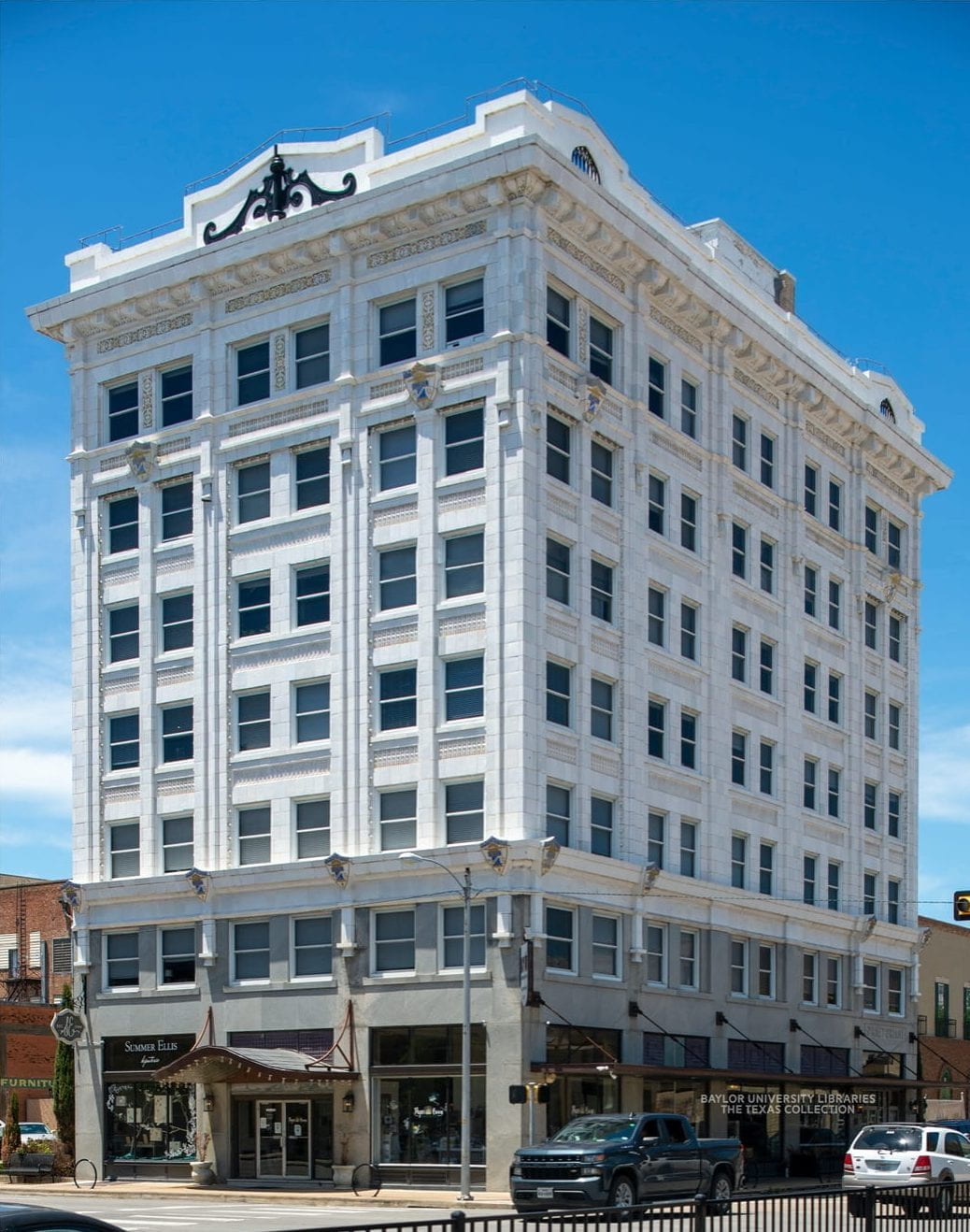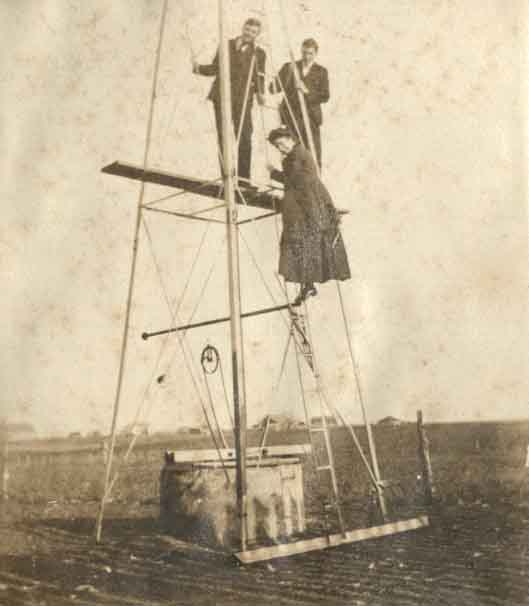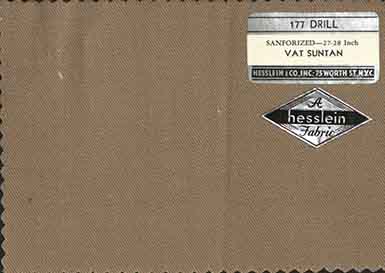By Geoff Hunt, Audio and Visual Curator, The Texas Collection, Baylor University.
Texas has changed quite a bit over the years, as is readily seen in our vast photograph and postcard collections. To help bring some of those changes to life, we’ve created a “Texas over Time” blog series that will illustrate the construction and renovations of buildings, street scenes, and more. Our collections are especially strong on Waco and Baylor images, but look for some views beyond the Heart of Texas, too.
Waco’s Praetorian Building
Waco’s Praetorian Building at 601 Franklin Avenue, is one of the city’s most distinctive structures. The building was originally built for the Waco Chapter of the Modern Order of Praetorians, a fraternal life insurance company originally founded in 1898, in Dallas, by Charles Gardner. Its construction was completed in 1915, in the Chicago Style of architectural design. It has 7-stories and was designed by the firm of C.W. Bulger and Company and was constructed by Hughes O’Rourke Construction of Dallas. The building is made of reinforced concrete and the exterior base has gray granite and terra cotta on its facades. The structure has stood the test of time, and this includes surviving the catastrophic 1953 Waco tornado, and remaining mostly unaltered during the later changes the downtown area saw during Urban Renewal.
The Praetorian Life Insurance Company’s headquarters was in Dallas, and that city’s Praetorian Building was 15-stories tall and completed in 1909. At the time, the Dallas structure was the tallest building in Texas, and considered to be the first skyscraper in the Southwestern U.S. This undoubtedly led many to pay attention to what Waco’s Praetorian Building would look like. However, according to a May 23, 1913, Waco Morning News article regarding the building’s design, it states: “The city will always have reason to be proud of its Amicable [Alico Building] but none, we think, will suggest it is likely Waco will ever need another building of that height.” The article also states that it is a design that “Waco needs and wants.” At the time, this was referred to as a “medium-height” structure, and it seemed fitting for the Waco skyline of 1915. Beginning in the early 1910’s, and at the time of the Praetorian’s construction, Waco was already well-known in the state’s insurance industry having home offices for: Texas Fidelity & Bonding Co., Amicable Life Insurance Co., First Texas State Insurance Co., Southern Union Life Insurance Co., and Texas Life Insurance Co. Consequently, Waco was referred to as “The Insurance City of Texas.” The selection of Waco for another Praetorian Building seemed obvious, and this company succeeded well in building a structure much smaller in size but just as impressive as its Dallas counterpart.
When built, the Waco Praetorian’s main occupant was the insurance company that bears its name, and on the first floor for many years was the First Bank and Trust. Additionally, in its earlier days, the upper floors served as main offices for some of the local railroad companies. As the Praetorian Life Insurance Company changed their mission and ownership over the years, the Praetorian Building did as well. The building later came to be known under several different names and occupants such as Service Mutual Building, 1934; Southwestern Building, 1956 (Praetorian’s sold the building this year); Veteran Administration, 1962-1965; Franklin Tower; and was vacant from 1973-1989, and in 1989, it was bought and renamed Williams Tower. However, One of the most important moments in the history of the Praetorian Building happened the fall of 1984, when the National Register of Historic Places (U.S. National Park Service) added it to their listing. The building was nominated to the register by Binnie Hoffman of the Austin, TX., architectural firm of Bell, Klein, and Hoffman who recognized its potential and well-preserved state. In the same year, Waco Heritage and History Magazine, Vol. 15, No. 2, published their original nomination letter which states: “The only differences shown on the building’s exterior in historic photographs [compared to 1984] are a flag pole centered on the main (southeastern) parapet, an ox-bow, arched canopy suspended by an iron bracket over the entrance on the east side, and a full-length canopy suspended from iron rods at the ground-floor northeastern facade.” The Waco Heritage and History article also states: “The later Waco Praetorian Building, while based on Chicago School organization and detailing, also had a regional flair in its Mission parapet. It remains one of the few high-rise structures in downtown Waco and is one of only two Chicago Style structures in the city. The Dallas Praetorian was severely altered in 1961, leaving its Waco counterpart as the most significant intact structure associated with that institution.” Indeed, this article helps to sum up just how well-preserved the building was into the 1980’s, and its need for recognition and preservation on a national level. This information is even more relevant today.
In 1996, the original Waco Praetorian Building’s name was restored. By the early 2010’s, the building was on its way once again to becoming a well-utilized structure where many could call home or their place of work. While the Dallas Praetorian Building was deconstructed in 2013, a restoration of the Waco Praetorian began that same year. As a result, several floors were converted into loft apartments, also known as The Praetorian, the first floor into retail or business use, and space was even made for an art studio and gallery. In 2021, we are thankful for those who helped preserve the building over the years as it now stands prominently as one downtown Waco’s few remaining original high-rise structures.

The “Then” picture in the image sequence above shows the Praetorian Building in 1926, as it once was on 601 Franklin Avenue, Waco, Texas, by photographer Whayne Farmer. Source: Waco-Praetorian Building, General Photo File, The Texas Collection, Baylor University. The “Now’ image is of a similar view of the structure and taken in May 2021, by Geoff Hunt.


Works Sourced:
“Lofty ambitions: Praetorian Building in downtown Waco entering 2nd century,” Waco Tribune-Herald, May 12, 2012. https://wacotrib.com/news/local/lofty-ambitions-praetorian-building-in-downtown-waco-entering-2nd-century/article_74127614-b77d-52ba-8f49-aedd3515bd89.html. Accessed 5 May 2021.
“Praetorian Building Honored with National Register Listing.” Waco Heritage and History Magazine, Vol. 15, No. 2, Winter 1984. https://digitalcollections-baylor.quartexcollections.com/Documents/Detail/waco-heritage-and-history-vol.-15-no.-2-winter-1984/1530652?item=1530667. Accessed 5 May 2021.
“The Praetorian’s Building,” Waco Morning News, May 23, 1913.
“Praetorian Building One Handsome Waco Structure,” Waco Morning News, May 11, 1916.
Sawyer, Amanda. “The Praetorian,” https://wacohistory.org/items/show/106. Accessed 5 May 2021.






